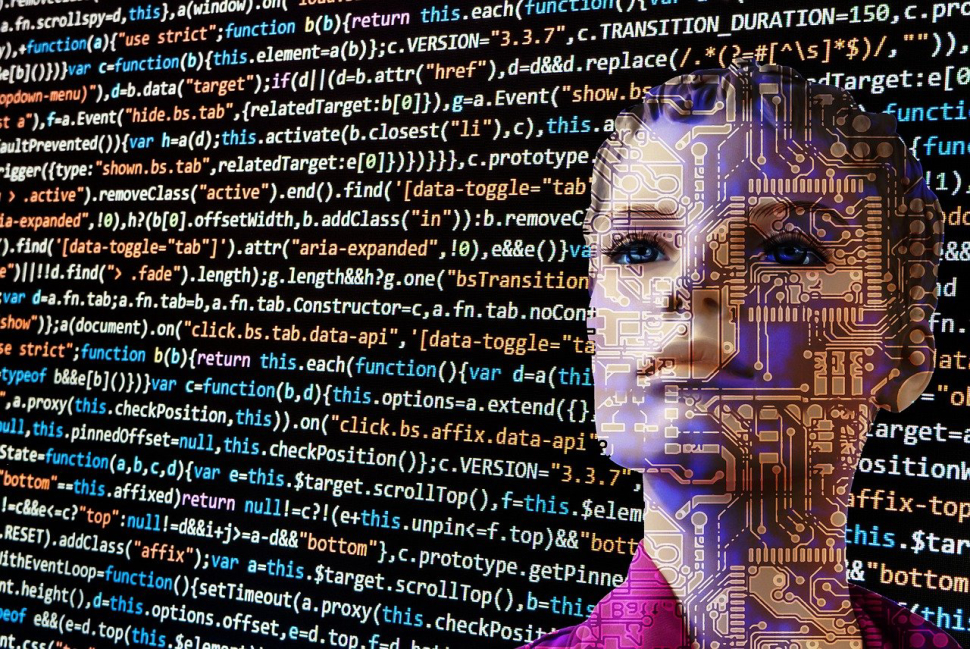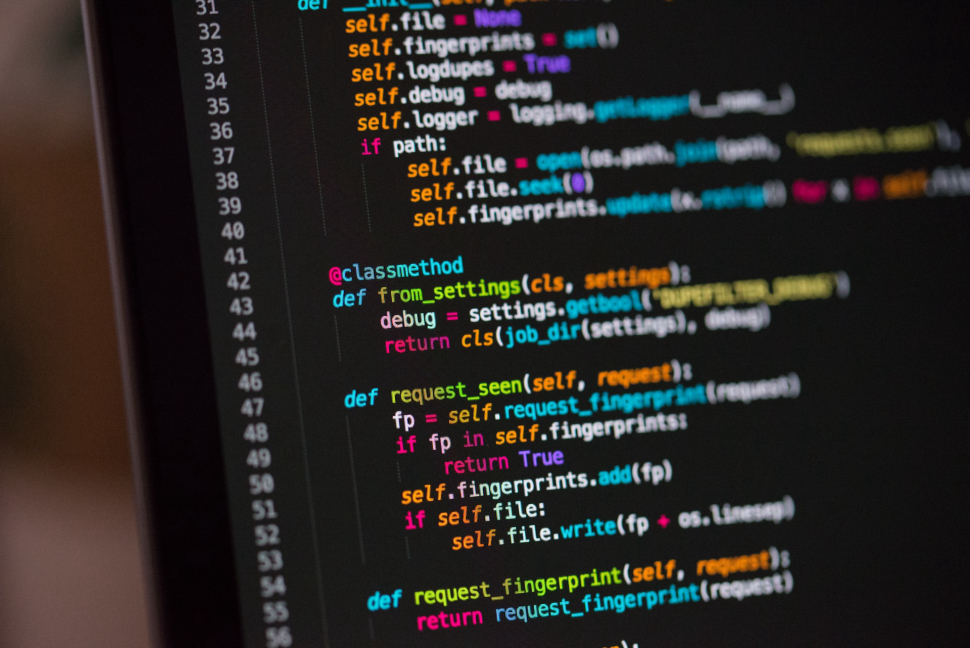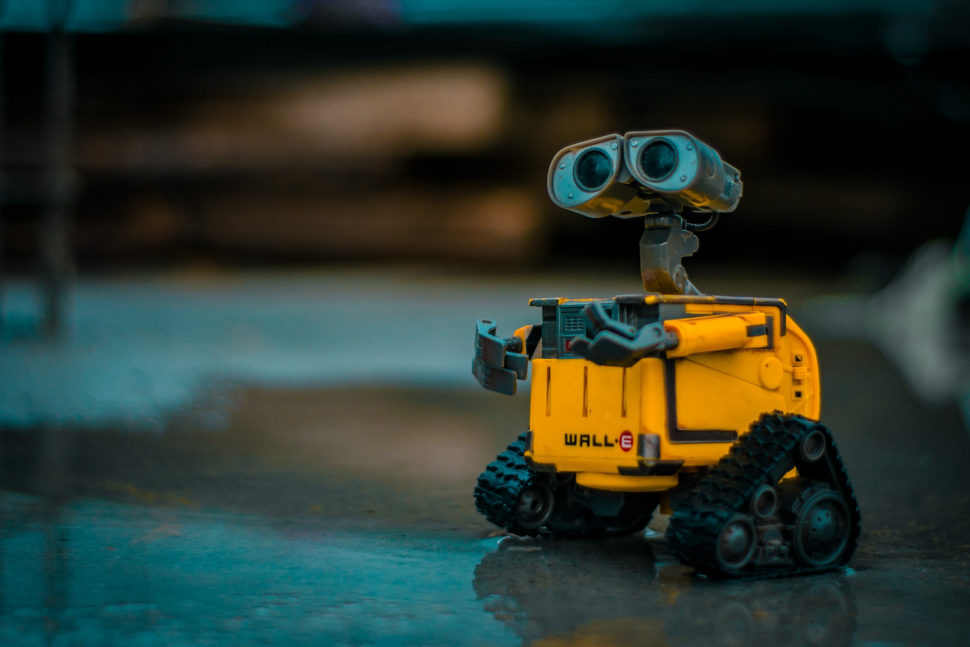Main Robot Programming Takeaways:
- Robotics involves designing, constructing, and operating intelligent machines called robots.
- The word robot comes from the Slavic word robota, which means servant.
- The major robotics fields are operator interface, locomotion, effectors, programming, and perception.
- Robot programming is the development of a control scheme for how a machine interacts with its environment and achieve its goals.
- Robot Operating System is a middleware — a collection of software frameworks for robot software development.
- A robot control software is a program for controlling robots.
- Popular programming languages in robotics include C / C++, Python, JAVA, C# /.NET, MATLAB, among others.
Robot programming is fast becoming a big deal as more companies show interests and invest in robots.
According to reports, the global robotics technology — valued at $62.75 billion in 2019 — would reach $170.08 billion by 2027. As a result, demand for robot programmers will also surge in the coming decade.
That’s where this post comes in. While it doesn’t explore the practical details of robot programming, this article covers the basics.
What is Robotics?
Robotics refer to an interdisciplinary research area at the interface of science, engineering, and technology. The research’s goal is to develop machines that’ll not only replicate human actions but ultimately substitute for humans. As a result, robotics involves designing, constructing, and operating intelligent machines called robots. Such machines are useful in various industries such as aerospace, healthcare, e-commerce, space exploration, and transportation, among others.
The word robot comes from the Slavic word robota, which means servant. But, Karel Čapek — a Czech writer — was first to use the term robot in his 1920 play RUR (Rossum’s Universal Robots).
At the time, Čapek used the term to describe factory-created individuals who can be mistaken for humans. Indeed, that’s similar to the modern idea of androids or humanoids.
Today, robotics is one of the fastest-growing areas of research. Transitioning from the Czech writer’s script, robotics is now divided into various fields.
What are the Five Major Fields of Robotics

The expertise of a team of engineers is necessary to build an advanced robot. For this reason, the major robotics fields are operator interface, mobility or locomotion, manipulators and effectors, programming, sensing and perception.
1. Operator Interface
The operator interface refers to the interaction between a robot and its human controller. It’s the mechanism of communication between an individual and his or her machine.
For example, a joystick controller serves as the operator interface between a gamer and the console.
2. Mobility or Locomotion
Mobility or locomotion describes how the robot moves from one place to another within a given space. And it varies based on the type of machine.
For instance, flying robots and drones use propellers for movement. Similarly, humanoids walk on two legs like humans. Other mobility options include fins and wheels.
3. Manipulators and Effectors
It refers to the specific component of a machine that makes it ideal for performing particular tasks. Such parts could include pushers, claws, grippers, mechanical arms, and fingers.
For example, industrial robots are usually equipped with two-finger grippers for moving things.
4. Sensing and Perception
Sensing and perception focus on how a machine identifies things in its environment and react to these factors. Thanks to this field, a robot can access information such as:
- Where it is
- Where to go
- How to avoid obstacles
For example, when a robot encounters an obstacle, what direction should it take. Programmers feed such components into the machine to help it make the right decision.
5. Programming
Programming refers to the commands that enable robots to function in a specific situation. It involves designing and building an executable computer program to accomplish particular tasks.
Over one thousand languages exist today for programming robots. To understand how this field of robotics work, we must delve a little deeper.
What is Robot Programming?

Robot programming refers to the process of developing a control scheme for how a machine interacts with its environment and achieve its goals. It usually requires a basic knowledge of mathematics and a programming language. For example, Python is one of the most popular robot programming languages today.
Besides developing machine learning, Python can also be used to create Robot Operating System packages. Before we explore other programming languages, let’s consider the software first.
What Software is Used to Program Robots
Robots Operating System (ROS)
Robot Operating System is a middleware — a collection of software frameworks for robot software development. While it’s not an operating system, ROS provides services designed for a heterogeneous computer cluster.
These include:
- Hardware abstraction
- Low-level device control
- Implementation of commonly used functionality
- Message-passing between processes
- Package management
For example, the open-source project, ROS-Industrial extends the capabilities of ROS to manufacturing automation and robotics. As such, it’s repository include interfaces unique to industrial robots.
These include industrial manipulators, grippers, sensors, and device networks.
The critical advantage of the robot operating system is the way the software runs and communicate. It allows programmers to design advanced software without knowing how specific hardware work.
ROS currently rolls out a new version every May, following the release of Ubuntu LTS versions. Similarly, ROS2 releases a new version every six months — in December and July.
Robot Control Software
As you may have guessed, a robot control software is a program for controlling robots. It’s the set of coded commands that tells the machine what tasks to perform autonomously.
Some everyday tasks that a robot software controls include feedback loops, data filtering, location and data sharing.
Robot software has a highly proprietary nature. As such, robot hardware manufacturers usually have to provide their own software to work with the machine.
How do I Learn to Program Robotics?

From over 1,500 programming languages in the world, only ten are popular in the fields of robotics. These include Pascal, Scratch, Industrial Robot Language, LISP and Prolog. There’s also C / C++, Python, JAVA, C# /.NET, MATLAB, and Hardware Description Language.
Here’s a breakdown of the robot programming languages in order of usefulness.
1. Pascal
Pascal is a basic language — literally based on the language BASIC— designed to encourage good programming practices. That’s because it uses structured programming and data structuring.
This programming language is also the basis for several of the industrial robot languages. For this reason, it’s an excellent starting point for individuals looking to program industrial robots.
While Pascal may be too outdated for everyday use, it can help you become familiar with other industrial robot languages. That way, you can explore various robot brands.
2. Scratch
Scratch is extremely popular among budding roboticist, and for good reasons. The visual programming language essentially involves dragging and connecting blocks.
As a result, it’s ideal for new programmers — users between ages eight and sixteen. Furthermore, Scratch is the language of choice in most robotics clubs and school technology classes.
Most experienced roboticists are unlikely to write any industrial robots in Scratch. However, the language provides a useful way for beginners to get into robotics.
3. Industrial Robot Languages
Today, almost every robot comes with its proprietary robot programming language.
As you may have guessed, that has been a long-standing issue in industrial robotics. It means users have to learn a new language every time they use a new robot brand.
For example, Fanuc robots use Karel, Yaskawa uses INFORM, Kuka has KRL (Kuka Robot Language), and ABB has its RAPID programming language. The list goes on.
Some general-purpose programming framework — such as ROS Industrial — are starting to offer standardized options. However, technicians are still likely to use the proprietary language.
4. LISP and Prolog
The field of artificial intelligence has become more popular recently. As a result, various AI programming languages are now enjoying more attention than ever before. LISP and Prolog are two of such languages.
LISP is one of the earliest programming languages. As a result, it pioneered many ideas in computer science, such as automatic storage management, conditionals, recursion, and higher-order functions.
Meanwhile, Prolog was one of the first logic programming languages. Besides proving useful for natural language processing, Prolog is also used for theorem proving, expert systems, and automated planning.
Indeed, you can program artificial intelligence using other languages on this list. However, LISP and Prolog are an essential part of some AI implementations.
It’s also worth noting that robotics and AI are two separate fields.
5. Hardware Description Language
Engineers who create low-level electronics for robots use Hardware Description Languages to describe their prototypes.
Thanks to HDL, programmers can quickly describe a circuit using words and symbols. Development software can then convert that textual description into configuration data for implementation.
The most popular Hardware Description Languages are Verilog and VHDL. And they’re widely used to program Field Programmable Gate Arrays (FPGAs).
6. MATLAB
Robotics engineers rely on MATLAB for analyzing data and developing control systems. Aside from data processing, some university courses also use this programming language for research purposes.
However, robotics engineers use MATLAB and Simulink to design for various purposes. These include:
- Tuning algorithms
- Model real-world systems
- Generating codes automatically
Furthermore, they perform these functions from one software environment.
7. C# /.NET
C# is a proprietary programming language from Microsoft. It’s the primary language of the Microsoft Robotics Developer Studio — a Windows-based environment for robot control and simulation.
As such, researchers that want to use the system must learn C#. Besides, the programming language also serves as the basis for some popular Virtual Reality engines such as Unity.
With that said, C# may not be the most straightforward programming language to learn. Consider starting with C/C++.
8. JAVA
Java is a class-based, object-oriented, general-purpose, programming language. It’s designed to let application developers write once and run anywhere (WORA).
In other words, JAVA code can run on any platform that supports JAVA without the need for recompilation. As such, it becomes possible to use the same code on different machines.
JAVA is quite useful is some aspect of robotics. For example, it’s one of the core languages in modern AIs such as AlphaGo and IBM’s Watson.
9. Python
Python is one of the most popular programming languages, thanks to the fast-growing machine learning field. In fact, the IEEE Spectrum described it as the top programming language in 2019.
The significant advantage of this programming language is its ease of use. With Python, things that take up time in programming — such as defining and casting variable types — becomes unnecessary.
Besides, an extensive amount of free libraries are available for Python. As a result, programmers won’t have to “reinvent the wheel” to implement some basic functionality.
Python is useful in robotics because it’s one of the main programming languages in ROS (besides C++). Yet, it could become even more popular as more robotic-friendly electronics support the language by default.
10. C / C++
C and C++ is the number one programming language in robotics, and for obvious reasons.
Several hardware libraries in robotics use either C or C++. Besides, these libraries allow interaction with low-level hardware. And they also support real-time performance.
Today, C++ is arguably more useful in robotics than C. However, the latter remains one of the most energy-efficient programming languages available.
Note that C/C++ are not as easy to use as Python or MATLAB. Not only does it take a longer time to implement the same functionality using C, but it also requires more lines of code.
However, robotics relies heavily on real-time performance. As a result, C and C++ are the closest things to a standard language for programming robots.
Final Word: Which Robot Programming Language Should You Learn?

Based on this post, you might conclude that learning Python or C/C++ should be the first step. While this conclusion may be accurate, the answer is not that simple.
The correct response would be to learn whichever programming language that currently makes the most sense to you. Here’s why.
In the beginning, you should only focus on developing acceptable programming practices. Although this could involve learning many languages, you only have to select one that feels natural to you.
Such language should let you develop programs quickly and easily. However, it must also fit with your robotic hardware.
For most people, that programming language is Python. It’s easy to learn and powerful — thanks to the massive libraries. After Python, you may want to learn C and C++ to interface with robotic hardware drivers.
However, if you’re under the age of 16 or have no programming experience, you may want to start from Scratch — no pun intended.



















Thanks for the knowledge… Very much appreciated. You’re doing a great job
this was cool
this was cool
🙂
Love this but am i the only one who wants to make walking, talking, and memory robot
Love this but am i the only one who wants to make
walking, talking, and memory robot same thing apply to me bro
thank youy sir